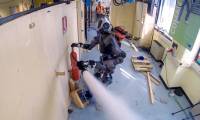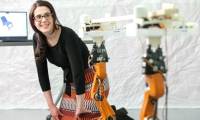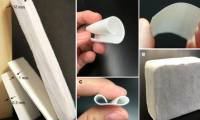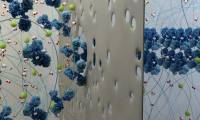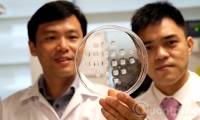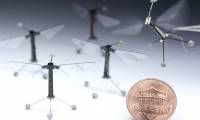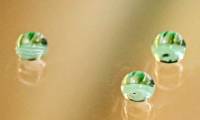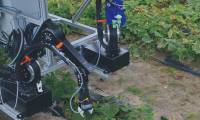
To save costs, time, as well as manpower, Fraunhofer teamed up with German and Spanish researchers to complete a cucumber harvesting project with field experiments, called CATCH
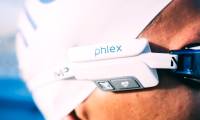
The Edge device uses a biosensor to monitor over 30 swimming indicators during training. They include indicators like distance traveled, calories burned, heart rate, breathing ...
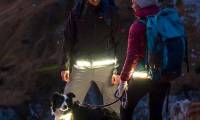
OliLight climbing lamp is basically a LED strip that can be worn as a 360-degree waist belt, and can also act as a personal rescue light if you have trouble in the wilderness.
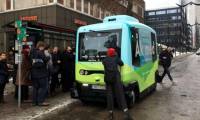
Telecom company Ericsson has partnered with Swedish public transport and public service providers to conduct a six-month trial with two electric vehicles running self-propelled on

Researchers at Italy's IIT-Istituto Italiano di Tecnologia have succeeded in testing a new version and improving the WALK-MAN humanoid robot, designed to assist firefighters.

A Vanderbilt group led by Professor Doug Adams is testing a new thermoplastic called Elium.

Scientists at MIT's Computer and Intelligence Science Laboratory (CSAIL) have developed an experimental system called AutoSaw, which uses robots to serve woodworking.

Engineers at the University of Maryland created a new insulating material capable of preventing temperatures higher than 100 degrees Celsius compared to porous or air silica.

The international team of researchers has developed a new 3D printing technique for stainless steel materials with exceptional durability and ductility.

New model technology can open up the opportunity to re-create complex biological environments developed by researchers at Queen Mary University in London (QMUL).

Scientists have demonstrated the existence of a new type of material called the excitonium - first hypothesized nearly 50 years ago.

Scientists have found a way to develop hydrogels to mimic the structure and shape of plant or animal tissue, a progress that can be used in soft robots.

There was a skin patch to help people quit smoking and recently had a weight loss patch.

Nissan has announced a new technology system in which it can determine what drivers want to do and it will operate a few seconds automatically to minimize highway risks.

Scientists are developing a new type of program that allows small robots to think and act like insects, making them more autonomous and adapting to a more complex environment.

In the past, we have heard of a land cover that illuminates, absorbs solar energy, generates electricity from pedestrian footsteps, and even transmits Wi-Fi signals. Now NASA is

A new approach to studying water viscosity has revealed new insights into the behavior of water molecules and can open the way for liquid electronics to be manufactured and applied

WinSun Construction has revealed the world's first 3D printed bus stop.

A group of Japanese robot robots have built a human model that mimics the physical complexity of a human being.

NASA has partnered with US defense research agencies to build robots not only to refuel and repair satellites but also to counter enemy spacecraft in the event of a space war.
 To save costs, time, as well as manpower, Fraunhofer teamed up with German and Spanish researchers to complete a cucumber harvesting project with field experiments, called CATCH
To save costs, time, as well as manpower, Fraunhofer teamed up with German and Spanish researchers to complete a cucumber harvesting project with field experiments, called CATCH The Edge device uses a biosensor to monitor over 30 swimming indicators during training. They include indicators like distance traveled, calories burned, heart rate, breathing ...
The Edge device uses a biosensor to monitor over 30 swimming indicators during training. They include indicators like distance traveled, calories burned, heart rate, breathing ... OliLight climbing lamp is basically a LED strip that can be worn as a 360-degree waist belt, and can also act as a personal rescue light if you have trouble in the wilderness.
OliLight climbing lamp is basically a LED strip that can be worn as a 360-degree waist belt, and can also act as a personal rescue light if you have trouble in the wilderness. Telecom company Ericsson has partnered with Swedish public transport and public service providers to conduct a six-month trial with two electric vehicles running self-propelled on
Telecom company Ericsson has partnered with Swedish public transport and public service providers to conduct a six-month trial with two electric vehicles running self-propelled on Researchers at Italy's IIT-Istituto Italiano di Tecnologia have succeeded in testing a new version and improving the WALK-MAN humanoid robot, designed to assist firefighters.
Researchers at Italy's IIT-Istituto Italiano di Tecnologia have succeeded in testing a new version and improving the WALK-MAN humanoid robot, designed to assist firefighters. A Vanderbilt group led by Professor Doug Adams is testing a new thermoplastic called Elium.
A Vanderbilt group led by Professor Doug Adams is testing a new thermoplastic called Elium. Scientists at MIT's Computer and Intelligence Science Laboratory (CSAIL) have developed an experimental system called AutoSaw, which uses robots to serve woodworking.
Scientists at MIT's Computer and Intelligence Science Laboratory (CSAIL) have developed an experimental system called AutoSaw, which uses robots to serve woodworking. Engineers at the University of Maryland created a new insulating material capable of preventing temperatures higher than 100 degrees Celsius compared to porous or air silica.
Engineers at the University of Maryland created a new insulating material capable of preventing temperatures higher than 100 degrees Celsius compared to porous or air silica. The international team of researchers has developed a new 3D printing technique for stainless steel materials with exceptional durability and ductility.
The international team of researchers has developed a new 3D printing technique for stainless steel materials with exceptional durability and ductility. New model technology can open up the opportunity to re-create complex biological environments developed by researchers at Queen Mary University in London (QMUL).
New model technology can open up the opportunity to re-create complex biological environments developed by researchers at Queen Mary University in London (QMUL). Scientists have demonstrated the existence of a new type of material called the excitonium - first hypothesized nearly 50 years ago.
Scientists have demonstrated the existence of a new type of material called the excitonium - first hypothesized nearly 50 years ago. Scientists have found a way to develop hydrogels to mimic the structure and shape of plant or animal tissue, a progress that can be used in soft robots.
Scientists have found a way to develop hydrogels to mimic the structure and shape of plant or animal tissue, a progress that can be used in soft robots. There was a skin patch to help people quit smoking and recently had a weight loss patch.
There was a skin patch to help people quit smoking and recently had a weight loss patch. Nissan has announced a new technology system in which it can determine what drivers want to do and it will operate a few seconds automatically to minimize highway risks.
Nissan has announced a new technology system in which it can determine what drivers want to do and it will operate a few seconds automatically to minimize highway risks. Scientists are developing a new type of program that allows small robots to think and act like insects, making them more autonomous and adapting to a more complex environment.
Scientists are developing a new type of program that allows small robots to think and act like insects, making them more autonomous and adapting to a more complex environment. In the past, we have heard of a land cover that illuminates, absorbs solar energy, generates electricity from pedestrian footsteps, and even transmits Wi-Fi signals. Now NASA is
In the past, we have heard of a land cover that illuminates, absorbs solar energy, generates electricity from pedestrian footsteps, and even transmits Wi-Fi signals. Now NASA is A new approach to studying water viscosity has revealed new insights into the behavior of water molecules and can open the way for liquid electronics to be manufactured and applied
A new approach to studying water viscosity has revealed new insights into the behavior of water molecules and can open the way for liquid electronics to be manufactured and applied WinSun Construction has revealed the world's first 3D printed bus stop.
WinSun Construction has revealed the world's first 3D printed bus stop. A group of Japanese robot robots have built a human model that mimics the physical complexity of a human being.
A group of Japanese robot robots have built a human model that mimics the physical complexity of a human being. NASA has partnered with US defense research agencies to build robots not only to refuel and repair satellites but also to counter enemy spacecraft in the event of a space war.
NASA has partnered with US defense research agencies to build robots not only to refuel and repair satellites but also to counter enemy spacecraft in the event of a space war.